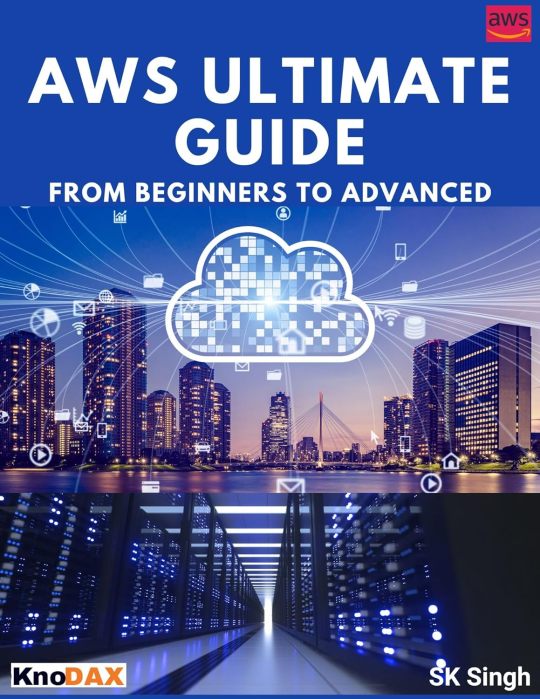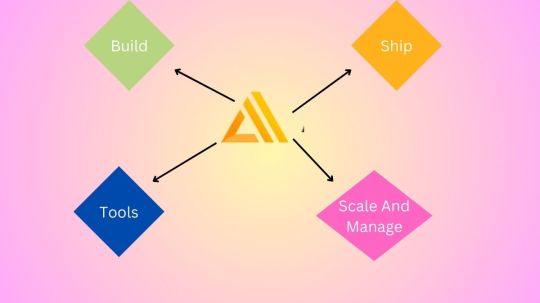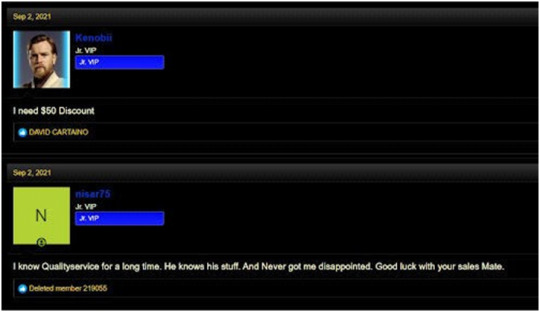#aws cognito api
Explore tagged Tumblr posts
Text
Our step-by-step guide teaches how to replicate AWS Cognito user data across regions. Enhance data availability, disaster recovery, and seamless user experience. Read now for detailed instructions!
#aws cognito#aws cognito sso#aws cognito api#aws cognito documentation#aws services#aws cloud#cloud services#ethics first#habilelabs
0 notes
Text
Java + Golang Developer
Job Description Role: Java + Golang Developer Required Experience: 4 – 8 Years Skills: AWS Cloud, Kafka, AWS… Lambda, Ready API, API Gateway, Cognito, Aurora, Spark, SAGA, Java, Kubernetes + Python + Golang, Java Work mode: Work… Apply Now
0 notes
Text
A Hands-on Tutorial on Creating a Multi-Tenant SaaS with AWS Cognito and API Gateway
A Hands-on Tutorial on Creating a Multi-Tenant SaaS with AWS Cognito and API Gateway Introduction In this tutorial, we will guide you through the process of creating a multi-tenant SaaS application using AWS Cognito and API Gateway. This tutorial is designed for developers who want to build a scalable and secure multi-tenant application. By the end of this tutorial, you will have a working…
0 notes
Text
10+ AWS Projects for Students to Showcase Cloud Skills

Cloud computing has revolutionized how businesses and individuals manage data, offering scalable and reliable solutions. Amazon Web Services (AWS) is at the forefront of this transformation, providing a vast array of tools and services for deploying, managing, and optimizing applications. For students eager to showcase their cloud skills, working on AWS projects can be a great way to gain hands-on experience and enhance their portfolios.https://internshipgate.com
Here’s a list of 10+ AWS projects that students can explore to demonstrate their cloud computing expertise:
1. Build a Static Website on AWS S3
Host a fully functional static website using AWS S3. Combine it with Amazon CloudFront for faster content delivery and Route 53 for domain management.
Skills Highlighted: S3 bucket setup, DNS configuration, content delivery network (CDN) integration.
2. Create a Personal Portfolio Using AWS Amplify
AWS Amplify simplifies app development and hosting. Build a personal portfolio showcasing your AWS projects and deploy it using Amplify.
Skills Highlighted: Frontend development, CI/CD, deployment pipeline.
3. Deploy a Serverless Application Using AWS Lambda
Develop a serverless application that performs specific tasks (e.g., image processing or text analysis) using AWS Lambda. Integrate it with API Gateway and DynamoDB for data storage.
Skills Highlighted: Serverless architecture, API integration, database management.
4. Set Up a Virtual Private Cloud (VPC)
Design a secure and scalable AWS VPC. Configure subnets, route tables, and internet gateways. Optionally, simulate a hybrid cloud by integrating with an on-premises network using AWS VPN.
Skills Highlighted: Networking, security, infrastructure setup.
5. Launch a Machine Learning Model on AWS SageMaker
Train and deploy a machine learning model using Amazon SageMaker. Use datasets from Kaggle or AWS Open Data Registry to predict trends or analyze data.
Skills Highlighted: Machine learning, data preprocessing, model deployment.
6. Implement a Real-Time Chat Application
Build a chat application using AWS AppSync for real-time data syncing. Combine it with Cognito for user authentication and DynamoDB for storing messages.
Skills Highlighted: Real-time data synchronization, user management, app development.
7. Design an IoT System with AWS IoT Core
Create an IoT application where devices send data to AWS IoT Core. Visualize this data using AWS QuickSight or store it in Amazon RDS for analytics.
Skills Highlighted: IoT integration, data visualization, cloud database management.
8. Build a Scalable E-Commerce Platform
Develop an e-commerce prototype using Amazon EC2 for hosting, RDS for database management, and S3 for storing product images. Enhance the platform with CloudFront for speed optimization.
Skills Highlighted: Full-stack development, scalability, cloud storage.
9. Implement Disaster Recovery with AWS Backup
Simulate a disaster recovery system by configuring AWS Backup to automatically create backups of your database and storage. Test restoring from backups to ensure reliability.
Skills Highlighted: Backup management, reliability engineering, disaster recovery.
10. Analyze Big Data with AWS Glue and Athena
Extract and transform data using AWS Glue and query it using Athena. Pair this project with Amazon S3 for storage and QuickSight for visualization.
Skills Highlighted: Data analysis, ETL (Extract, Transform, Load), data querying.
11. Create a Photo Album Using AWS Rekognition
Develop a photo album application that uses Amazon Rekognition to analyze and tag uploaded photos. Add search functionality based on identified objects or people.
Skills Highlighted: AI/ML integration, image processing, app functionality.
12. Host a CI/CD Pipeline with AWS CodePipeline
Set up a CI/CD pipeline for a simple app using AWS CodePipeline. Integrate it with CodeCommit for version control and CodeBuild for automated builds.
Skills Highlighted: DevOps, CI/CD, version control integration.
Tips to Maximize Your Learning
Start with small projects and gradually move to complex ones.
Document your process on GitHub or a personal blog to share your learning.
Explore AWS Free Tier to keep costs manageable during project development.
Join AWS communities or forums to seek help and collaborate with peers.
Conclusion
Completing AWS projects not only helps you understand cloud computing concepts but also gives you practical experience with industry-relevant tools. Whether you’re building applications, managing infrastructure, or exploring AI, these projects will make your portfolio stand out to potential employers.https://internshipgate.com
#career#internship#virtualinternship#internshipgate#internship in india#education#cloud computing#aws cloud#aws course#projects
0 notes
Text
AWS Proto Unveils Stunning AI-Powered Avatar Holograms

In today's rapidly evolving world, technology is transforming our interactions at an unprecedented pace. At the forefront of this innovation are AI-Powered Avatar Holograms. Through an exciting collaboration between Proto Inc. and Amazon Web Services (AWS), a new era of holographic communication is emerging that redefines how we connect, share, and interact across various industries. Let’s dive into the fascinating advancements that this collaboration has to offer!
Advanced Holographic Technology
Proto Inc. has introduced the Proto AI Persona Suite, a collection of advanced AI-driven holographic tools designed for seamless interaction. Key Components of the Proto AI Persona Suite - AI Conversational Persona: Engages in real-time conversations with lifelike holographic representations. - AI Text-to-Persona: Converts written text into vibrant holograms that communicate naturally. - AI Persona Translator: Offers accurate translations of spoken content into multiple languages with a human touch.
Integration with AWS for Enhanced Capabilities
The partnership with AWS plays a crucial role in the development and functionality of these holographic avatars. By migrating to Amazon Bedrock, Proto has harnessed cutting-edge generative AI technologies, leading to significant improvements in their offerings. Live Demonstrations at Major Events At the Mobile World Congress (MWC) 2024, Proto and AWS showcased the powerful capabilities of their collaboration through a live avatar broadcast, demonstrating how these holograms could revolutionize content sharing and audience engagement.
Innovative Text-to-Hologram Pipeline
A standout feature of this collaboration is the groundbreaking text-to-hologram pipeline. This technology allows users to create dynamic holographic content efficiently, using just a few lines of text. The process utilizes Amazon Cognito for secure access, the API Gateway for user queries, and AWS Lambda to trigger holographic content production.
Industry Applications and Future Directions
The applications of AI-Powered Avatar Holograms span various fields, bringing transformative benefits including: - Enhanced educational tools enabling remote learning. - Innovative marketing strategies featuring virtual product demonstrations. - Revolutionized healthcare services with remote specialist consultations. - Personalized client interactions in hospitality and customer service. Exclusive Showcase at Upcoming Events As the momentum grows, both Proto and AWS are prepared to showcase these advancements at AWS re:Invent 2024, granting attendees an exclusive glimpse of the future of holographic technology.
Conclusion: A Bright Future for AI-Powered Avatar Holograms
The innovative collaboration between Proto Inc. and AWS is redefining the landscape of AI-Powered Avatar Holograms. These advancements are paving the way toward realistic, immersive interactions that can benefit numerous industries. As technology continues to evolve, we can anticipate exciting developments, making our digital experiences more engaging and personalized. Have thoughts or questions? Leave a comment below! And don’t forget to share this article with your friends to spread the word about the future of holographic communication. For more tech news and updates, check out FROZENLEAVES NEWS. ``` Read the full article
0 notes
Text
Cognito Amazon’s New Features For Modern App Authentication

Amazon Cognito advanced security features
I’m happy to inform a number of important changes to Cognito Amazon today. These improvements are meant to give your apps greater flexibility, enhanced security, and an improved user experience.
Here is a brief synopsis:
A brand-new developer-focused console environment that facilitates integration with well-known application frameworks for beginners
Presenting Managed Login: a collection of customization choices and a redesigned Cognito-managed drop-in sign-in and sign-up page
Passkey authentication and passwordless login are now supported by Cognito Amazon.
Additional pricing tier options to suit your use cases include the Lite, Essentials, and Plus tiers.
Image credit to AWS
A fresh console experience geared toward developers
With a short wizard and recommendations tailored to specific use cases, Amazon Cognito now provides a simplified getting started experience. With this new method, you may contact your end customers more quickly and effectively than ever before and set up configurations more quickly.
You can easily set up your application with the help of this new Cognito Amazon procedure. There are three stages to get started:
Decide what kind of application you must create.
Set up the sign-in options based on the kind of application you’re using.
To incorporate the sign-in and sign-up pages into your application, adhere to the guidelines.
Next, choose Create.
Image credit to AWS
Your application and a new user pool a user directory for authentication and authorization are then automatically created by Amazon Cognito. From here, you can either start using the sample code for your application or choose the View login page to examine your sign-in page. Additionally, Cognito Amazon provides comprehensive integration instructions for standard OpenID Connect (OIDC) and OAuth open-source libraries, as well as compatibility with major application frameworks.
This is your application’s updated overview dashboard. Important details are now available in the Details part of the user pool dashboard, along with a list of suggestions to assist you further your development.
The Managed Login function on this page allows you to personalize the sign-in and sign-up process for your users.
Presenting Managed Login
With the launch of Managed Login, Amazon Cognito offers even more customization options. For your business, Managed Login takes care of the heavy work of security, scalability, and availability. After integration, any future additions and security fixes are automatically applied without requiring additional code modifications.
With the help of this functionality, you can design unique sign-up and sign-in processes for your customers that blend in seamlessly with the rest of your business application.
You must assign a domain before you can utilize Managed Login. To give your consumers a recognizable domain name, you can either use a prefix domain, a randomly created Cognito Amazon domain subdomain, or your own custom domain.
After that, you can decide between the original Hosted UI and Managed login as your branding version.
The classic Hosted UI feature may be recognizable to you if you now utilize Amazon Cognito. A new set of web interfaces for sign-up and sign-in, multi-factor authentication, built-in responsiveness for various screen sizes, and password-reset capabilities for your user base are all features of Managed Login, an enhanced version of Hosted UI.
An array of API operations for programmatic configuration or deployment via infrastructure-as-code with Amazon Web Services CloudFormation, a new branding designer, and a no-code visual editor for managed login materials and style are all available with Managed Login.
You may alter how the entire user journey from sign-up and sign-in to password recovery and multi-factor authentication looks and feels by working with the branding designer. Before you run it, you can preview screens in various screen sizes and display modes with this feature’s handy shortcuts and real-time preview.Image credit to AWS
Support for passwordless login
Additionally, the Managed Login functionality provides pre-built connectors for passwordless authentication techniques, such as SMS OTP, email OTP (one-time password), and passkey signing. Better security than typical passwords is provided with passkey support, which enables users to authenticate using cryptographic keys that are safely saved on their devices. This feature enables you to create secure and low-friction authentication solutions without having to comprehend and use WebAuthn-related protocols.
This feature makes it easier for users to use your applications while upholding strong security standards by lowering the hassle that comes with traditional password-based sign-ins.
Additional pricing tier choices include Lite, Essentials, and Plus
Three new user pool feature tiers—Lite, Essentials, and Plus have been added to Cognito Amazon. The Essentials tier is the default tier for new user pools that customers create, and these tiers are made to accommodate various customer needs and use cases. With the ability to move between tiers as needed, this new tier structure also lets you select the best solution based on the needs of your application.
You can choose Feature plan from your application dashboard to see your current tier. Additionally, you can choose Settings from the menu.
You can choose to upgrade or downgrade your plan and get comprehensive details about each tier on this page.
Here is a brief synopsis of every tier:
Lite tier: This tier now includes pre-existing functionality including social identity provider integration, password-based authentication, and user registration. You can keep using these capabilities if you already use Cognito Amazon without changing your user pools.
Essentials tier: With the help of the Essentials tier’s ex:tensive authentication and access control tools, you can quickly and easily create safe, scalable, and personalized sign-up and sign-in processes for your application. In addition to providing Managed Login and passwordless login options via passkeys, email, or SMS, it has all the features of Lite. Additionally, Essentials allows you to disable password reuse and customize access tokens.
Plus Tier: It expands on the Essentials tier by emphasizing higher security requirements. It has all the essential functionality plus the ability to identify compromised credentials, protect against suspicious login activity, export user authentication event logs for threat analysis, and implement risk-based adaptive authentication.
Amazon Cognito pricing
The Lite, Essentials, and Plus levels’ prices are determined by the number of active users each month. Customers who are currently utilizing Cognito Amazon‘s advanced security features might want to think about upgrading to the Plus tier, which offers all of the advanced security features along with other benefits like passwordless access and up to 60% more savings than using the advanced security features alone.
Visit the Amazon Cognito pricing page to find out more about these new price tiers.
Things you should be aware of
Availability: With the exception of AWS GovCloud (US) Regions, all AWS Regions where Cognito Amazon is accessible offer the Essentials and Plus tiers.
Amazon Cognito free tier
Free tier for Lite and Essentials tiers: Users on the Lite and Essentials tiers are eligible for the free tier every month, which is perpetual. Both new and current Amazon Web Services users can access it indefinitely.
Customers can upgrade their user pools without advanced security features (ASF) in their current accounts to Essentials and pay the same price as Cognito user pools until November 30, 2025, with an extended pricing benefit for current customers. Customers must have had at least one monthly active user (MAU) on their accounts throughout the previous 12 months by 10:00 a.m. Pacific Time on November 22, 2024, to qualify. Until November 30, 2025, these customers can create new user pools with the Essentials tier for the same pricing as Cognito user pools in those accounts.
With these enhancements, you can use Cognito Amazon to create safe, scalable, and adaptable authentication solutions for your apps.
Read more on govindhtech.com
#CognitoAmazon#ModernApp#Authentication#advancedsecurity#AmazonWebServices#Essentials#tierchoices#Additionalpricing#technology#technews#news#AmazonCognitopricing#govindhtech
1 note
·
View note
Text

AWS Ultimate Guide: From Beginners to Advanced by SK Singh
This is a very comprehensive book on AWS, from beginners to advanced. The book has extensive diagrams to help understand topics much easier way.
To make understanding the subject a smoother experience, the book is divided into the following sections:
Cloud Computing
AWS Fundamentals (What is AWS, AWS Account, AWS Free Tier, AWS Cost & Billing Management, AWS Global Cloud Infrastructure (part I)), IAM, EC2)
AWS Advanced (EC2 Advanced, ELB, Advanced S3, Route 53, AWS Global Cloud Infrastructure (part II), Advanced Storage on AWS, AWS Monitoring, Audit, and Performance),
AWS RDS and Databases (AWS RDS and Cache, AWS Databases)
Serverless (Serverless Computing, AWS Integration, and Messaging)
Container & CI/CD (Container, AWS CI/CD services)
Data & Analytics (Data & Analytics)
Machine Learning (AWS ML/AI Services)
Security (AWS Security & Encryption, AWS Shared Responsibility Model, How to get Support on AWS, Advanced Identity)
Networking (AWS Networking)
Disaster Management (Backup, Recovery & Migrations)
Solutions Architecture (Cloud Architecture Key Design Principles, AWS Well-Architected Framework, Classic Solutions Architecture)
Includes AWS services/features such as IAM, S3, EC2, EC2 purchasing options, EC2 placement groups, Load Balancers, Auto Scaling, S3 Glacier, S3 Storage classes, Route 53 Routing policies, CloudFront, Global Accelerator, EFS, EBS, Instance Store, AWS Snow Family, AWS Storage Gateway, AWS Transfer Family, Amazon CloudWatch, EventBridge, CloudWatch Insights, AWS CloudTrail, AWS Config, Amazon RDS, Amazon Aurora, Amazon ElatiCache, Amazon DocumentDB, Amazon Keyspaces, Amazon Quantum Ledger Database, Amazon Timestream, Amazon Managed Blockchain, AWS Lambda, Amazon DynamoDB, Amazon API Gateway, SQS, SNS, SES, Amazon Kinesis, Amazon Kinesis Firehose, Amazon Kinesis Data Analytics, Amazon Kinesis Data Streams, Amazon Kinesis ECS, Amazon Kinesis ECR, Amazon EKS, AWS CloudFormation, AWS Elastic Beanstalk, AWS CodeBuild, AWS OpsWorks, AWS CodeGuru, AWS CodeCommit, Amazon Athena, Amazon Redshift, Amazon EMR, Amazon QuickSight, AWS Glue, AWS Lake Formation, Amazon MSK, Amazon Rekognition, Amazon Transcribe, Amazon Polly, Amazon Translate, Amazon Lex, Amazon Connect, Amazon Comprehend, Amazon Comprehend Medical, Amazon SageMaker, Amazon Forecast, Amazon Kendra, Amazon Personalize, Amazon Textract, Amazon Fraud Detector, Amazon Sumerian, AWS WAF, AWS Shield Standard, AWS Shield Advanced, AWS Firewall Manager, AWS GuardDuty, Amazon Inspector, Amazon Macie, Amazon Detective, SSM Session Manager, AWS Systems Manager, S3 Replication & Encryption, AWS Organization, AWS Control Tower, AWS SSO, Amazon Cognito, AWS VPC, NAT Gateway, VPC Endpoints, VPC Peering, AWS Transit Gateway, AWS Site-to-Site VPC, Database Management Service (DMS), and many others.
Order YOUR Copy NOW: https://amzn.to/4bfoHQy via @amazon
1 note
·
View note
Text

What are the types of Amazon Web Services?
Amazon Web Services (AWS) offers a wide range of cloud computing services that can be broadly categorized into the following types:
Compute Services: This includes services that provide scalable computing resources such as Amazon Elastic Compute Cloud (EC2), Amazon Elastic Container Service (ECS), and AWS Lambda.
Storage and Content Delivery Services: This includes services that enable you to store, manage and retrieve data such as Amazon Simple Storage Service (S3), Amazon Elastic Block Store (EBS), and Amazon Glacier.
Database Services: This includes services that provide managed database solutions such as Amazon Relational Database Service (RDS), Amazon DynamoDB, and Amazon Redshift.
Networking Services: This includes services that enable you to create and manage networking infrastructure such as Amazon Virtual Private Cloud (VPC), Amazon Route 53, and AWS Direct Connect.
Management Tools: This includes services that help you manage your AWS resources such as AWS CloudFormation, AWS CloudTrail, and AWS Config.
Security and Identity Services: This includes services that help you secure your applications and data such as AWS Identity and Access Management (IAM), Amazon Inspector, and AWS Certificate Manager.
Analytics Services: This includes services that help you analyze and gain insights from your data such as Amazon Kinesis, Amazon EMR, and Amazon Athena.
Application Services: This includes services that help you develop and deploy applications such as Amazon API Gateway, Amazon Elastic Beanstalk, and Amazon Simple Notification Service (SNS).
Mobile Services: This includes services that help you develop, test, and deploy mobile applications such as AWS Mobile Hub, Amazon Pinpoint, and Amazon Cognito.
Artificial Intelligence and Machine Learning Services: This includes services that enable you to build intelligent applications such as Amazon SageMaker, Amazon Rekognition, and Amazon Polly.
These are just some of the many services that AWS provides, and new services are being added on a regular basis.
0 notes
Text
AWS Cloud Practitioner - study notes
Security and Compliance
------------------------------------------------------
Shared Responsibility Model:
AWS responsibility: security of the cloud
Infrastructure elements: regions, edge locations an availability zones
Access control to data centers
Maintains networking components
Managed services like RDS, S3, ECS, Lambda
My responsibility: security in the cloud
Application data
Security configs like API calls, rotating credentials etc
Patching of a quest operation system
IAM
Network traffic protection
Installed software
Identity and Access Management (IAM):
Control access to your AWS services and resources
Secure cloud
Define who has access
Define what they can do
Free
Web Application Firewall (WAF):
Protect your web applications against common web attacks.
Protects apps against common attack patterns
Protects against SQL injection
Protects against cross-site scripting
Shield:
Managed Distributed Denial of Service protection service.
Always on-detection
Shield Standard is free
Shield Advanced is paid
Works with: CloudFront, Route S3, Elastic Load Balancing and AWS Global Accelerator
Macie:
Discover and protect sensitive data.
Uses machine learning
Evaluates S3 environment
Uncovers personally identifiable information (PII)
Config:
Asses, audit and evaluate the configs of resources.
Track config changes over time
Deliver config history file to S3
Notifications via Simple Notification Service of every config change
GuardDuty:
Intelligent threat detection system which uncovers unauthorized behavior.
Uses machine learning
Built-in detection for EC2, S3 and IAM
Reviews CloudTrail, VPC Flow Logs and DNS logs
Inspector:
Works with EC2 instances to uncover an report vulnerabilities.
Agent installed on EC2 instance
Reports vulnerabilities found
Check access from the internet, remote root login, vulnerable software versions, etc.
Artifact:
Offers on-demand access to AWS security and compliance reports.
Central repository for compliance reports form third-party auditors
Service Organization Controls (SOC) reports
Payment Card Industry (PCI) reports
Cognito:
Control access to mobile and web applications.
Provides authentication and authorization
Helps you manage users
Assists with user sign-up and sign-in
Key Management Service (KMS):
Generate and store encryption keys.
Key generator
Store and control keys
AWS manages encryption keys
Automatically enabled for certain services
CloudHSM:
Hardware security module (HSM) used to generate encryption keys.
Dedicated hardware for security
Generate and manage own encryption keys
AWS doesn't have access to keys
Secrets Manager:
Manage and retrieve secrets like passwords and keys.
Rotate, manage and retrieve secrets
Encrypt secrets at rest
Integrates with services like RDS, Redshift and DocumentDB
Well-Architected Framework:
Design principles and best practices for running workloads in the cloud.
Operational Excellence: AWS CodeCommit for version controlling and code changing.
Security: Using CloudTrail to configure central logging of all actions in account.
Reliability: Multi-AZ deployments for enhanced availability and reliability of RDS databases
Performance Efficiency: use AWS Lambda to run code whitout adminisitration.
Cost Optimization: USe S3 Intelligent-Tiering to move data between access tires.
Sustainability: Using EC2 Auto Scaling to ensure max. utilization.
0 notes
Text
Amazon Web Services (AWS)
1. Compute Services:
- Amazon Elastic Compute Cloud (EC2)
- Amazon Elastic Container Service (ECS)
- AWS Lambda
- AWS Elastic Beanstalk
- AWS Batch
- Amazon Lightsail
- AWS Fargate
2. Storage and Content Delivery Services:
- Amazon Simple Storage Service (S3)
- Amazon Elastic Block Store (EBS)
- Amazon Elastic File System (EFS)
- Amazon Glacier
- AWS Storage Gateway
- Amazon CloudFront
- Amazon Snowball
3. Database Services:
- Amazon Relational Database Service (RDS)
- Amazon DynamoDB
- Amazon Redshift
- Amazon ElastiCache
- Amazon Neptune
- Amazon DocumentDB
- Amazon Quantum Ledger Database (QLDB)
4. Networking and Content Delivery Services:
- Amazon Virtual Private Cloud (VPC)
- Elastic Load Balancing (ELB)
- AWS Direct Connect
- Amazon Route 53
- Amazon API Gateway
- AWS Global Accelerator
5. Security, Identity, and Compliance Services:
- AWS Identity and Access Management (IAM)
- AWS Key Management Service (KMS)
- AWS Secrets Manager
- AWS Shield
- AWS WAF (Web Application Firewall)
- Amazon Cognito
- AWS Certificate Manager (ACM)
6. Management and Governance Services:
- AWS CloudFormation
- AWS CloudTrail
- AWS Systems Manager
- Amazon CloudWatch
- AWS Auto Scaling
- AWS Trusted Advisor
- AWS Config
7. Analytics Services:
- Amazon Athena
- Amazon Kinesis
- Amazon Redshift Spectrum
- Amazon QuickSight
- AWS Glue
- AWS Data Pipeline
8. AI and Machine Learning Services:
- Amazon Polly
- Amazon Lex
- Amazon Rekognition
- Amazon SageMaker
- Amazon Transcribe
- Amazon Comprehend
- AWS DeepLens
9. Application Integration Services:
- Amazon Simple Queue Service (SQS)
- Amazon Simple Notification Service (SNS)
- Amazon Simple Workflow Service (SWF)
- AWS Step Functions
- Amazon EventBridge
10. Mobile Services:
- AWS Mobile Hub
- AWS Device Farm
- AWS Mobile Analytics
- AWS Pinpoint
11. Developer Tools:
- AWS CodeStar
- AWS CodeCommit
- AWS CodeBuild
- AWS CodePipeline
- AWS CodeDeploy
- AWS X-Ray
12. Internet of Things (IoT):
- AWS IoT Core
- AWS IoT Analytics
- AWS IoT Device Management
- AWS IoT Events
- AWS IoT Greengrass
13. Blockchain Services:
- Amazon Managed Blockchain
14. Game Development:
- Amazon GameLift
0 notes
Text
Secure AWS Resources with Cognito User Pools and API Gateway Integration
Introduction Securing AWS Resources with Cognito User Pools and API Gateway Integration is a crucial aspect of building robust and scalable cloud-based applications. In this tutorial, we will explore the process of integrating Amazon Cognito User Pools with Amazon API Gateway to provide secure authentication and authorization for your AWS resources. What You Will Learn By the end of this…
0 notes
Text
Serverless framework – Building Web App using AWS Lambda, Amazon API Gateway, S3, DynamoDB and Cognito - Part 2
Serverless framework – Building Web App using AWS Lambda, Amazon API Gateway, S3, DynamoDB and Cognito – Part 2
In previous article we’ve created and deployed a simple web application using which architecture consists of AWS Lambda, Amazon API Gateway, S3, DynamoDB and Cognito using Serverless framework. That and this articles are based on original AWS hands-on tutorial, which we slightly automated.
I did not like the result we’ve got in first article. And decided to make it more simpler and clear. How?…
View On WordPress
2 notes
·
View notes
Text
How to Secure AWS API Gateway With Cognito User Pool
How to Secure AWS API Gateway With Cognito User Pool
In this blog, you will learn how to configure an AWS API Gateway backed by an AWS Java Lambda. Next, you will learn how to secure the API by means of an AWS Cognito User Pool. Enjoy! 1. Introduction AWS API Gateway is a managed service which allows you to manage your API. It has many features available like creating the API, publishing it, securing it, versioning it, etc. Some of the features…

View On WordPress
0 notes
Text
AWS Amplify Features For Building Scalable Full-Stack Apps

AWS Amplify features
Build
Summary
Create an app backend using Amplify Studio or Amplify CLI, then connect your app to your backend using Amplify libraries and UI elements.
Verification
With a fully-managed user directory and pre-built sign-up, sign-in, forgot password, and multi-factor auth workflows, you can create smooth onboarding processes. Additionally, Amplify offers fine-grained access management for web and mobile applications and enables login with social providers like Facebook, Google Sign-In, or Login With Amazon. Amazon Cognito is used.
Data Storage
Make use of an on-device persistent storage engine that is multi-platform (iOS, Android, React Native, and Web) and driven by GraphQL to automatically synchronize data between desktop, web, and mobile apps and the cloud. Working with distributed, cross-user data is as easy as working with local-only data thanks to DataStore’s programming style, which leverages shared and distributed data without requiring extra code for offline and online scenarios. Utilizing AWS AppSync.
Analysis
Recognize how your iOS, Android, or online consumers behave. Create unique user traits and in-app analytics, or utilize auto tracking to monitor user sessions and web page data. To increase customer uptake, engagement, and retention, gain access to a real-time data stream, analyze it for customer insights, and develop data-driven marketing plans. Amazon Kinesis and Amazon Pinpoint are the driving forces.
API
To access, modify, and aggregate data from one or more data sources, including Amazon DynamoDB, Amazon Aurora Serverless, and your own custom data sources with AWS Lambda, send secure HTTP queries to GraphQL and REST APIs. Building scalable apps that need local data access for offline situations, real-time updates, and data synchronization with configurable conflict resolution when devices are back online is made simple with Amplify. powered by Amazon API Gateway and AWS AppSync.
Functions
Using the @function directive in the Amplify CLI, you can add a Lambda function to your project that you can use as a datasource in your GraphQL API or in conjunction with a REST API. Using the CLI, you can modify the Lambda execution role policies for your function to gain access to additional resources created and managed by the CLI. You may develop, test, and deploy Lambda functions using the Amplify CLI in a variety of runtimes. After choosing a runtime, you can choose a function template for the runtime to aid in bootstrapping your Lambda function.
GEO
In just a few minutes, incorporate location-aware functionalities like maps and location search into your JavaScript online application. In addition to updating the Amplify Command Line Interface (CLI) tool with support for establishing all necessary cloud location services, Amplify Geo comes with pre-integrated map user interface (UI) components that are based on the well-known MapLibre open-source library. For greater flexibility and sophisticated visualization possibilities, you can select from a variety of community-developed MapLibre plugins or alter embedded maps to fit the theme of your app. Amazon Location Service is the driving force.
Interactions
With only one line of code, create conversational bots that are both interactive and captivating using the same deep learning capabilities that underpin Amazon Alexa. When it comes to duties like automated customer chat support, product information and recommendations, or simplifying routine job chores, chatbots can be used to create fantastic user experiences. Amazon Lex is the engine.
Forecasts
Add AI/ML features to your app to make it better. Use cases such as text translation, speech creation from text, entity recognition in images, text interpretation, and text transcription are all simply accomplished. Amplify makes it easier to orchestrate complex use cases, such as leveraging GraphQL directives to chain numerous AI/ML activities and uploading photos for automatic training. powered by Amazon Sagemaker and other Amazon Machine Learning services.
PubSub
Transmit messages between your app’s backend and instances to create dynamic, real-time experiences. Connectivity to cloud-based message-oriented middleware is made possible by Amplify. Generic MQTT Over WebSocket Providers and AWS IoT services provide the power.
Push alerts
Increase consumer interaction by utilizing analytics and marketing tools. Use consumer analytics to better categorize and target your clientele. You have the ability to customize your content and interact via a variety of channels, such as push alerts, emails, and texts. Pinpoint from Amazon powers this.
Keeping
User-generated content, including images and movies, can be safely stored on a device or in the cloud. A straightforward method for managing user material for your app in public, protected, or private storage buckets is offered by the AWS Amplify Storage module. Utilize cloud-scale storage to make the transition from prototype to production of your application simple. Amazon S3 is the power source.
Ship
Summary
Static web apps can be hosted using the Amplify GUI or CLI.
Amplify Hosting
Fullstack web apps may be deployed and hosted with AWS Amplify’s fully managed service, which includes integrated CI/CD workflows that speed up your application release cycle. A frontend developed with single page application frameworks like React, Angular, Vue, or Gatsby and a backend built with cloud resources like GraphQL or REST APIs, file and data storage, make up a fullstack serverless application. Changes to your frontend and backend are deployed in a single workflow with each code commit when you simply connect your application’s code repository in the Amplify console.
Manage and scale
Summary
To manage app users and content, use Amplify Studio.
Management of users
Authenticated users can be managed with Amplify Studio. Without going through verification procedures, create and modify users and groups, alter user properties, automatically verify signups, and more.
Management of content
Through Amplify Studio, developers may grant testers and content editors access to alter the app data. Admins can render rich text by saving material as markdown.
Override the resources that are created
Change the fine-grained backend resource settings and use CDK to override them. The heavy lifting is done for you by Amplify. Amplify, for instance, can be used to add additional Cognito resources to your backend with default settings. Use amplified override auth to override only the settings you desire.
Personalized AWS resources
In order to add custom AWS resources using CDK or CloudFormation, the Amplify CLI offers escape hatches. By using the “amplify add custom” command in your Amplify project, you can access additional Amplify-generated resources and obtain CDK or CloudFormation placeholders.
Get access to AWS resources
Infrastructure-as-Code, the foundation upon which Amplify is based, distributes resources inside your account. Use Amplify’s Function and Container support to incorporate business logic into your backend. Give your container access to an existing database or give functions access to an SNS topic so they can send an SMS.
Bring in AWS resources
With Amplify Studio, you can incorporate your current resources like your Amazon Cognito user pool and federated identities (identity pool) or storage resources like DynamoDB + S3 into an Amplify project. This will allow your storage (S3), API (GraphQL), and other resources to take advantage of your current authentication system.
Hooks for commands
Custom scripts can be executed using Command Hooks prior to, during, and following Amplify CLI actions (“amplify push,” “amplify api gql-compile,” and more). During deployment, customers can perform credential scans, initiate validation tests, and clear up build artifacts. This enables you to modify Amplify’s best-practice defaults to satisfy the operational and security requirements of your company.
Infrastructure-as-Code Export
Amplify may be integrated into your internal deployment systems or used in conjunction with your current DevOps processes and tools to enforce deployment policies. You may use CDK to export your Amplify project to your favorite toolchain by using Amplify’s export capability. The Amplify CLI build artifacts, such as CloudFormation templates, API resolver code, and client-side code generation, are exported using the “amplify export” command.
Tools
Amplify Libraries
Flutter >> JavaScript >> Swift >> Android >>
To create cloud-powered mobile and web applications, AWS Amplify provides use case-centric open source libraries. Powered by AWS services, Amplify libraries can be used with your current AWS backend or new backends made with Amplify Studio and the Amplify CLI.
Amplify UI components
An open-source UI toolkit called Amplify UI Components has cross-framework UI components that contain cloud-connected workflows. In addition to a style guide for your apps that seamlessly integrate with the cloud services you have configured, AWS Amplify offers drop-in user interface components for authentication, storage, and interactions.
The Amplify Studio
Managing app content and creating app backends are made simple with Amplify Studio. A visual interface for data modeling, authorization, authentication, and user and group management is offered by Amplify Studio. Amplify Studio produces automation templates as you develop backend resources, allowing for smooth integration with the Amplify CLI. This allows you to add more functionality to your app’s backend and establish multiple testing and team collaboration settings. You can give team members without an AWS account access to Amplify Studio so that both developers and non-developers can access the data they require to create and manage apps more effectively.
Amplify CLI toolchain
A toolset for configuring and maintaining your app’s backend from your local desktop is the Amplify Command Line Interface (CLI). Use the CLI’s interactive workflow and user-friendly use cases, such storage, API, and auth, to configure cloud capabilities. Locally test features and set up several environments. Customers can access all specified resources as infrastructure-as-code templates, which facilitates improved teamwork and simple integration with Amplify’s continuous integration and delivery process.
Amplify Hosting
Set up CI/CD on the front end and back end, host your front-end web application, build and delete backend environments, and utilize Amplify Studio to manage users and app content.
Read more on Govindhtech.com
#AWSAmplifyfeatures#GraphQ#iOS#AWSAppSync#AmazonDynamoDB#RESTAPIs#Amplify#deeplearning#AmazonSagemaker#AmazonS3#News#Technews#Technology#technologynews#Technologytrends#govindhtech
0 notes
Text
Amazon AWS Accounts with $5,000
Amazon AWS Accounts with $5,000 Credits
Available – Save Your Top Dollars on Amazon AWS Bills
Join 1,000,000+ users tapping into the power of the most advanced
on-demand cloud-computing platform – Amazon AWS. When it comes to cloud computing, you may not be willing to spend thousands of dollars on your Amazon Web Services bill.
To help you save your precious dollars, we’re offering Amazon Web Services account with $5,000 credits that are ready to be spent on their services - all at a discounted price.
AWS credits are directly applied to bills to cover the costs associated with eligible services. This means – you won’t have to spend a hefty amount to tap into Amazon’s AWS services.
As of this writing, we’re loaded with multiple AWS accounts with
$5,000 in credits, and we’re offering them at a discounted price. Upon reaching out to us, we’ll provide you with the credentials and any other details required to access these accounts.
AWS Services You Can Avail $5,000 Credits On:
With these accounts, you can avail the following Amazon AWS services:
· Alexa for Business
· Amazon API Gateway
· Amazon AppFlow
· Amazon AppStream
· Amazon Athena
· Amazon Augmented AI
· Amazon Braket
· Amazon Chime
· Amazon Chime Business Calling - a service sold by AMCS LLC
· Amazon Chime Call Me
· Amazon Chime Dial-in
· Amazon Chime Voice Connector a service sold by AMCS LLC
· Amazon Cloud Directory
· Amazon CloudFront
· Amazon CloudSearch
· Amazon Cognito
· Amazon Cognito Sync
· Amazon Comprehend
· Amazon Connect
· Amazon Detective
· Amazon DocumentDB (with MongoDB compatibility)
· Amazon DynamoDB
· Amazon EC2 Container Registry (ECR)
· Amazon EC2 Container Service
· Amazon Elastic Compute Cloud
· Amazon Elastic Container Service for Kubernetes
· Amazon Elastic File System
· Amazon Elastic Inference
· Amazon Elastic MapReduce
· Amazon Elastic Transcoder
· Amazon ElastiCache
· Amazon Elasticsearch Service
· Amazon Forecast
· Amazon FSx
· Amazon GameLift
· Amazon GameOn
· Amazon Glacier
· Amazon GuardDuty
· Amazon Honeycode
· Amazon Inspector
· Amazon Interactive Video Service
· Amazon Kendra
· Amazon Keyspaces (for Apache Cassandra)
· Amazon Kinesis
· Amazon Kinesis Analytics
· Amazon Kinesis Firehose
· Amazon Kinesis Video Streams
· Amazon Lex
· Amazon Lightsail
· Amazon Machine Learning
· Amazon Macie
· Amazon Managed Blockchain
· Amazon Managed Streaming for Apache Kafka
· Amazon Mobile Analytics
· Amazon MQ
· Amazon Neptune
· Amazon Personalize
· Amazon Pinpoint
· �� Amazon Polly
· Amazon Quantum Ledger Database
· Amazon QuickSight
· Amazon Redshift
· Amazon Rekognition
· Amazon Relational Database Service
· Amazon Route 53
· Amazon S3 Glacier Deep Archive
· Amazon SageMaker
· Amazon Simple Email Service
· Amazon Simple Notification Service
· Amazon Simple Queue Service
· Amazon Simple Storage Service
· Amazon Simple Workflow Service
· Amazon SimpleDB
· Amazon Sumerian
· Amazon Textract
· Amazon Timestream
· Amazon Transcribe
· Amazon Translate
· Amazon Virtual Private Cloud
· Amazon WorkDocs
· Amazon WorkLink
· Amazon WorkSpaces
· Amazon Zocalo
· AmazonCloudWatch
· AmazonWorkMail
· AWS Amplify
· AWS AppSync
· AWS Backup
· AWS Budgets
· AWS Certificate Manager
· AWS Cloud Map
· AWS CloudFormation
· AWS CloudHSM
· AWS CloudTrail
· AWS CodeArtifact
· AWS CodeCommit
· AWS CodeDeploy
· AWS CodePipeline
· AWS Config
· AWS Cost Explorer
· AWS Data Exchange
· AWS Data Pipeline
· AWS Data Transfer
· AWS Database Migration Service
· AWS DataSync
· AWS DeepComposer
· AWS DeepRacer
· AWS Device Farm
· AWS Direct Connect
· AWS Directory Service
· AWS Elemental MediaConnect
· AWS Elemental MediaConvert
· AWS Elemental MediaLive
· AWS Elemental MediaPackage
· AWS Elemental MediaStore
· AWS Elemental MediaTailor
· AWS Firewall Manager
· AWS Global Accelerator
· AWS Glue
· AWS Greengrass
· AWS Ground Station
· AWS Import/Export
· AWS Import/Export Snowball
· AWS IoT
· AWS IoT 1 Click
· AWS IoT Analytics
· AWS IoT Device Defender
· AWS IoT Device Management
· AWS IoT Events
· AWS IoT SiteWise
· AWS IoT Things Graph
· AWS Key Management Service
· AWS Lambda
· AWS OpsWorks
· AWS RoboMaker
· AWS Secrets Manager
· AWS Security Hub
· AWS Service Catalog
· AWS Shield
· AWS Snowball Extra Days
· AWS Step Functions
· AWS Storage Gateway
· AWS Storage Gateway Deep Archive
· AWS Systems Manager
· AWS Transfer Family
· AWS WAF
· AWS X-Ray
· CloudWatch Events
· CodeBuild
· CodeGuru
Comprehend Medical
· Contact Center Telecommunications (service sold by AMCS, LLC)
· DynamoDB Accelerator (DAX)
· Elastic Load Balancing
Services You Can’t Avail With These Credits:
While you can save your top dollars on almost all AWS services with these credits, it’s important to note that the Amazon $5,000 AWS credits can’t be applied to charges or fees for:
· Ineligible AWS Support
· AWS Marketplace
· Amazon Mechanical Turk
· Amazon Route 53 Domain Name Transfer or Registration
· Cryptocurrency Mining Services
· Upfront Fees for Services Like Reserved Instances & Savings Plan
Exclusive Features:
· Amazon AWS account with $5,000 credits
· Remember – it’s not a promo code. It’s a dedicated AWS account
· Loaded $5,000 credits which can be used to avail the services we mentioned above.
· $5,000 AWS credits valid for 1 year
· 24 Hours Warranty
Note: These are rare accounts. And while we are loaded with many, they are limited in stock. So, if you are looking forward to saving your top dollars on Amazon AWS bills, grab these accounts before we run out of stock.
Frequently Answered Questions:
· What are Amazon AWS Credits?
AWS credits are credits that can be directly applied to bills to cover the costs associated with the eligible services. It’s one of the best ways of saving your top dollars while availing Amazon’s AWS services.
· Can these $5,000 AWS credits be used with my current Amazon AWS account?
Yes – you can. Feel free to reach out to me for further details.
· Do these credits expire?
Yes – they’ll expire in two year. You need to use them before they do.
· Are these accounts safe? Any chances of getting banned?
We are laser-focused on delivering the best quality service to our clients. These accounts are completely safe and just like any other AWS account. One thing you need to keep in mind is - you need to respect Amazon’s TOS.
· Do you offer more than one Amazon AWS account with $5,000 credits?
Yes – we are loaded with many Amazon AWS accounts. Feel free to reach out to us to discuss further details.
· Is this a complete dedicated account or coupon code?
These are standalone Amazon AWS accounts – not coupon codes.
Don’t wait around. Place your order today!
Price:
AWS Accounts WITH $5K = $300 AWS Accounts WITH $10K = $400 Payment Method: Bitcoins
BTC Address :bc1qqr2xhvtrk89f5t0z2crvkv06wlkc3z3pet7hxm
Gifts:If you purchase now, you will receive a $350 Google Cloud Platform (GCP) credit account.
When you have made your payment, please contact [email protected]
Refund and Replacement Policy:
100% MONEY BACK GUARANTEE
We are the only one who provides 100% money back guarantee for this kind of service.We strongly believe in the quality of our service. Get this and go through it immediately. There is no risk and you literally have nothing to lose.

>>>Offer valid today At the Lowest Cost!!!:
90% off still available, but won’t be available for long, claim your Offer now.
It is great value for money deal, for the goodies you are getting.
Cannot guarantee about stocks, these sell like hot up cakes( only 2 left in stock as of now ).
Custom reviews



1 note
·
View note